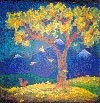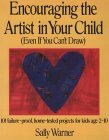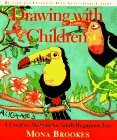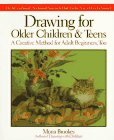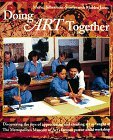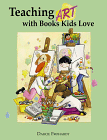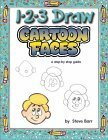
The Waldorf Education Super-Site!
Home/Topics <- Start Here
Rudolf Steiner, Academics, Anthroposophy, Eurythmy, Media Restriction, Art, Health & Safety, Tree Climbing, Steiner for Kids, Special Needs, Criticism, more Topics!...
|
Research & Tools
Links, Reading Room, Steiner Says..., Checklist, Waldorf Parents Survival Guide, Academic Resources, School Tour, more Tools!...
|
Community
Forums, News, Email updates, For Educators, About, Open Letter, Thanks, Feedback, Mail Bag, more...
|
|
|
Art and Creativity
Waldorf prides itself on it's art education for children. In fact, Waldorf's approach to art is what first attracts many parents to Waldorf. When you dig in, you will discover the colorful philosophies which guide Waldorf's approach to art.
Art Curriculum Resources Online
There are lots of resources for researching art curriculum online. Visit these sites and make a list of the kinds of things you want your child to learn in art at Waldorf. You can bring it to your school so they can tell you how they address different approaches to media, themes, content, composition, color, and style that appeal to you.
There are many ways that Waldorf art education differs from mainstream art development theory.
"Mainstream" Art Curriculum Resources:
Experts on Drawing in Young Children
 Howard Gardner
Howard Gardner
Yes, this is THE Howard Gardner, the father of "Multiple Intelligences Theory." He is also an expert on art and cognitive development in children. He believes that drawing with lines is essential to the artistic and cognitive development in young children. This is in contrast with Waldorf theory, which prefers to delay the use of lines by young children. You can read some of his theories here:
-
 The Arts and Human Development (FREE Online!)
The Arts and Human Development (FREE Online!)
-
 Art, Mind, and Brain (FREE Online!)
Art, Mind, and Brain (FREE Online!)
-
Artful Scribbles

 Rhoda Kellogg
Rhoda Kellogg
Rhoda Kellogg is another expert specializing in children's art. There are a few good resources of her work online.
Waldorf Art Curriculum Resources
Imagination and Self-Expression
To get a sense of how Waldorf approaches imagination and creativity in art, it might help to compare artwork about a certain subject drawn by Waldorf students, with art created in a more "conventional" classroom.
You can see a great example of the benefit of all children copying the same root image in the beautiful online art exhibit entitled "September 11, 2001: Images of Hope" You'll notice that except for color and compositional variations, most of the drawings are nearly identical.
When you contrast this gallery of drawings by Waldorf students, with drawings by non-Waldorf students, you can better grasp the differences between Waldorf's approach to art and imagination. National Geographic has an exhibit of 9/11 art by "mainstream" kids.
Comparison of Waldorf and "Mainstream" Art
 9/11 art by
9/11 art by
Waldorf kids
|
|
When you compare these galleries, you might want to ask yourself questions related to the kind of artistic expression you want for your own child:
- How do the children use their imaginations to express their individuality?
- How is original thinking nurtured and expressed? How is each drawing different? How is each one the same?
- How do children express themselves creatively with regard to themes, content, composition, color, and style?
- And, in this specific example of the World Trade Center incident, how were the different approaches used to help children deal with their own unique emotions they might be experiencing after this traumatic event? How did each approach help children "'process' all that had happened," and "enter into it with depth?"
Keep in mind, there are no right answers to these questions!
Color at Waldorf
The spiritual nature of color was of great importance to Rudolf Steiner. Waldorf's color theory is based on Goethean color theory. To get an idea of how important color is to Waldorf, check out this chart that shows the meticulous approach that goes into the painting of classroom walls at early Waldorf Schools. You can print it out and take it on school tour to compare the colors with your school.
There's a great article on Goethean and Newtonian color theory at PhysicsToday.org.
You might want to purchase Rudolf Steiner's book, Colour.
Sample Waldorf Painting Lessons
|
|
This is a 5th grade main lesson activity called "A Creatiion Painting." Along with brief painting instructions, there is a long description of the story of "Brahma the Creator," also know as Vishnu. You can read what Steiner says about Brahma at Google:
|
|
|
This lesson for the elementary grades goes into detail as to why yellow and blue are the primal colors. |
 |
This lesson describes the Fertile Crescent in ancient Mesopotamia. |
Stockmar Tutorials are for suppllies found in Waldorf schools.
Waldorf Art Galleries
|
|
|

Learning History in the Waldorf School
|

Melissa Will - ClassBook Portfolio
|
|
|
|

Shining Mountain Waldorf School
|
|
|
|
|
|
|
|
|
|
|
|
 Share your children's Waldorf art online! to participate!
Share your children's Waldorf art online! to participate!
 About Black Crayons at Waldorf
About Black Crayons at Waldorf
Typically, most younger Waldorf students aren't allowed to use the color black. This may have to do with Rudolf Steiner's view on the color black:
|
|
Now submerge yourself in black; you are completely surrounded by black--in this black darkness a physical being can do nothing. Life is driven out of the plant when it becomes carbon. Black shows itself alien to life, hostile to life; when plants are carbonized they turn black. Life, then can do nothing in blackness. And the soul? Our soul life deserts us when this awful blackness is within us.
Black represents the spiritual image of the lifeless.
|
When you tour the school, you'll notice an abscence of black crayons, and an abscence of black in most school drawings by younger children. There are a few Waldorf sources that describe this practice on the web:
Questions for Parent's Night or School Tour
Waldorf Art Curriculum
- How do you encourage self-expression in art at Waldorf? How will I see this expressed in the classrooms and in the halls?
- Does Waldorf offer rich exposure to all kinds of different art methods, media and techniques?
- What sort of art do children do other than wet-on-wet painting, beeswax modeling, and form drawing?
- When do children learn to make line drawings? When do children learn to draw faces?
- When are children given black crayons and paint?
- What percentage of the time do students try to replicate a specific image? What percentage of the time do they work out of their own imaginations?
- Is it OK if my young child draws with lines at home?
- Is it OK if my child uses black crayons?
- Is it OK if my child uses fine markers and pens?
You can print out the Master Checklist for parents, and bring it with you to school.
|
Books for Your Budding Artist
 More on Waldorf and Art!
More on Waldorf and Art!
Promote open dialog about Waldorf Education!
 (20KB) - Download a PDF of the OpenWaldorf flier, and share it at your school Click here!
(20KB) - Download a PDF of the OpenWaldorf flier, and share it at your school Click here!
Share OpenWaldorf with other Waldorf communities like  ! Click here!
! Click here!
This web site is based on one Waldorf parent's personal journey.
It has no official affiliation with Waldorf education.
If you haven't already, please read About OpenWaldorf.
Copyright (c) 2003 Information: The words of OpenWaldorf.com may be freely distributed on the condition that they are clearly marked with the following sentence: "Source: OpenWaldorf.com, the most open site on the Internet for new and prospective Waldorf parents." Third-party sources quoted on OpenWaldorf.com are subject to the copyrights of the respective owners. Participants own their own words, and have full copyright over what they say.
![]()







